What are the Illnesses That Cause Hair Loss?

There are several illnesses that cause hair loss, and thinning may also occur as a side effect of treatment and medication.
In any case, losing hair can be a traumatic experience for men and women (More than 80% of men and nearly half of women experience hair loss during their lifetime).
And this extra strain only makes dealing with serious medical complaints more difficult.
If you’re worried about your hair loss reasons, contact your GP as soon as possible.
They may be able to eliminate common medical conditions and set your mind at ease.
Fast facts
| Illness | Type of hair loss | Is hair loss permanent? | Who is affected? |
|---|---|---|---|
| Diabetes | Thinning hairline | Reversible in some cases | |
| Lupus | Thinning or Complete balding | Permanent in some cases | |
| Cancer | Complete balding | Reversible | |
| Anaemia | Thinning | Reversible (in some cases) | |
| Scalp infections | Bald patches or Complete balding | Mostly reversible | |
| Thyroid disease | Thinning or Bald patches | Mostly reversible | |
| PCOS | Thinning or Receding hairline | Permanent | |
| Syphilis | Patchy hair loss | Reversible |
8 common illnesses that cause hair loss
To answer the question why is my hair falling out, we need to examine it from different aspects.
The most common cause of hair loss is by far female and male pattern baldness.
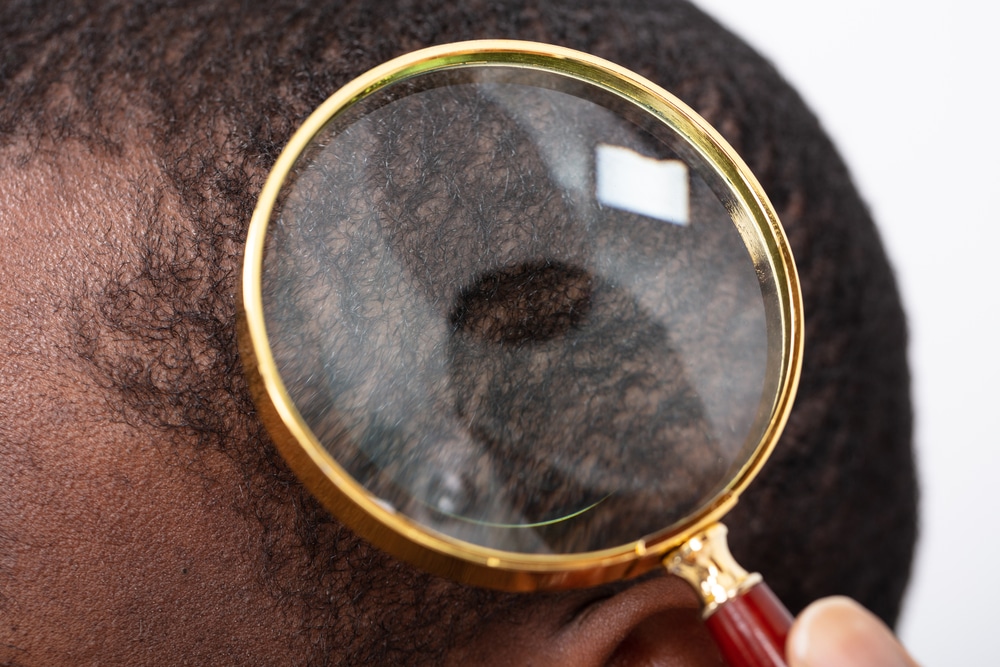
But certain medical conditions can cause slow, diffuse thinning over time, while others can lead to sudden hair loss in just a matter of weeks.
Here are 8 common illnesses that cause hair loss in males and females:
1. Diabetes
Diabetes hair loss can occur in multiple ways. Unchecked blood sugar levels can lead to vessel and tissue damage, ultimately affecting the body’s ability to produce new hair growth.
But secondary medical conditions arising from diabetes may be to blame, too.
For example, thyroid issues and alopecia areata are known causes of hair loss.
Read more about diabetes hair loss
2. Lupus
Lupus is an autoimmune disease, in which the immune system attacks the patient’s own organs and tissue.
Numerous parts of the body will be affected by systemic inflammation, including the skin, joints, kidneys, major organs, and healthy red blood cells.
Lupus and hair loss can intersect in two ways.
First, inflammation of the face and scalp prevents follicles from creating hair, disrupting the hair growth cycle.
Secondly, medications prescribed to treat lupus may leave hair follicles inactive by suppressing certain bodily systems, including the growth of new hair.
Changes to the hair’s structure can leave it brittle, causing it to break at the root.
Individuals affected by lupus might appear to lose hair, even though it’s still there.
Read more about lupus and hair loss
3. Cancer
Cancer is, sadly, one of the most well-known medical conditions causing hair loss. Numerous treatments (specifically chemotherapy or radiotherapy) can lead patients to lose hair and prevent them from producing more.
This may affect hair on the scalp, as well as eyelashes, pubic hair, eyebrows, etc.
The extent of hair loss may depend on the drugs used, their dosage, and the method of delivery (intravenous, pill, etc.).
Cancer treatment usually only leads to temporary hair loss, as most of the hair follicles are still capable of producing hair.
Hair growth tends to return to normal as soon as the cancer treatment ends. However, radiation treatment may lead to permanent hair loss in certain cases.
Lastly, hair loss and cancer can often worsen the underlying condition due to the added stress levels and lower self-esteem.
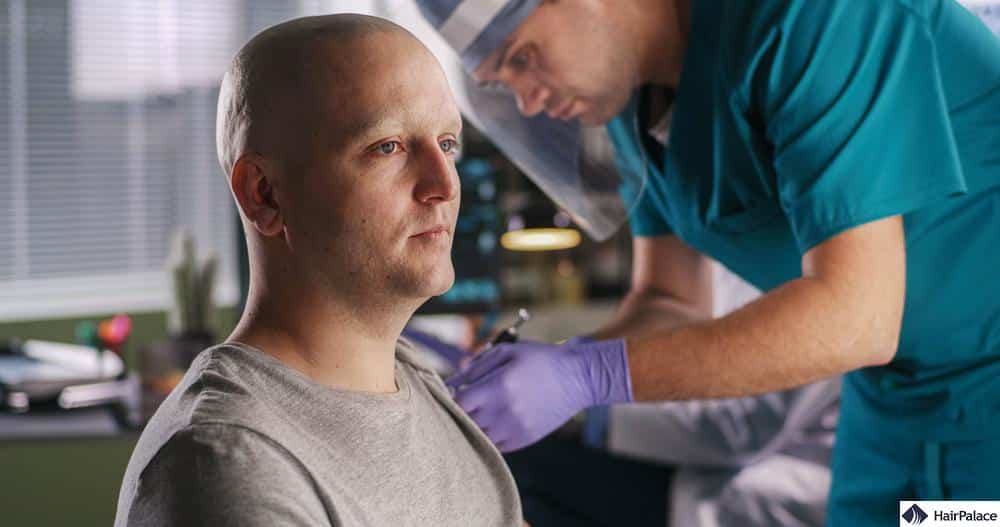
4. Anaemia
As anaemia disrupts haemoglobin levels and restricts the amount of oxygen transported to follicles, hair may be unable to grow in its usual way.
Anaemia and hair loss happen as the body diverts oxygen from non-essential cells (including the follicles) to help critical functions and organs work as they’re supposed to.
Hair follicles will be unable to transition from the growth cycle’s resting stage to the growth stage, leading to hair loss.
Iron deficiency is a common cause of anaemia. Hair loss may not be permanent.
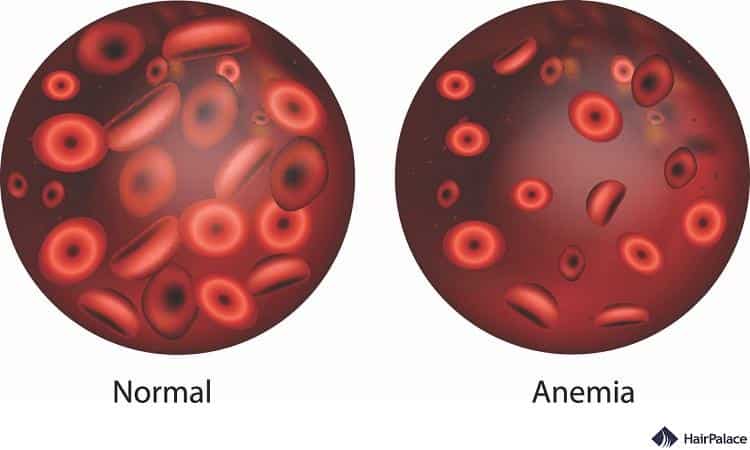
5. Scalp infection
A variety of scalp infections cause hair loss, including:
- seborrheic dermatitis
- ringworm
- psoriasis
- folliculitis
- piedra
Each of these may disrupt the hair follicles’ function and prevent hair growth.
For example, folliculitis leads to follicular inflammation and could destroy follicles in severe cases.
However, treatment options are available, such as medications and hair loss shampoos.
If your hair loss is caused by a medical condition, the first step in dealing with it is identification.
Speaking to a GP is crucial if you believe you may be affected by any of these (or other) medical conditions.
Read more about scalp infections
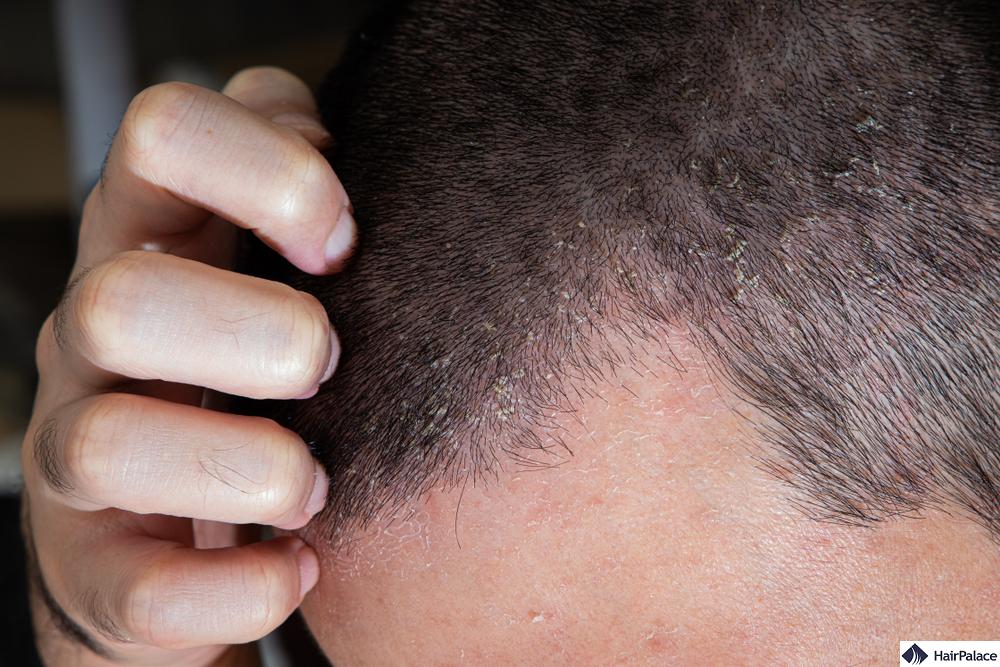
6. Thyroid disease
An underactive thyroid gland, as well as an overactive thyroid gland, may lead to hair loss if they go untreated.
Thyroid disease causes hair loss as a result of the hormonal changes happening due to the shift in thyroid levels. To fully understand hair loss related to thyroid problems we must first understand how hair grows.
- Hair grows from the root at the bottom of your hair follicle
- Your roots get nutrition through the scalp’s blood vessels, creating more cells and making your hair grow
- Hair slowly pushes up and out through your epidermis, while it passes through oil glands that keep it soft and shiny
- Hair keeps growing for a little while, and the falls out as it goes through different stages of the hair growth cycle.
Your hormone production gets disrupted as a result of thyroid problems, specifically hormones T3 and T4, which affect several processes within your body.
One of which is hair development. This type of hair loss happens due to your body becoming unable to replace the hairs that fall out, which results in thinning hair and bald patches across the scalp.
Certain drugs used for the treatment of thyroid problems can also lead to thinning hair. For example, carbimazole and propylthiouracil are antithyroid drugs that may lead to further hair loss in extreme cases.
Thyroid diseases associated with hair loss are easy to screen with a simple blood test. There is a wide range of medical treatments available to restore your hormonal balance, which usually makes the symptoms go away and halts hair loss.
If your hair loss is caused by low thyroid hormone levels, taking the proper medication will reverse hair thinning in most cases.

7. PCOS
Women produce male hormones, referred to as androgens. Besides triggering puberty, androgens play a huge role in hereditary hair loss, and they are recognized as the number one reason behind male pattern baldness and female pattern hair loss.
Polycystic ovary syndrome or PCOS causes surplus androgen production which leads to something called virilization.
What this means is the development of more masculine features, including more hair in unusual places, such as:
- face
- chest
- neck
- abdomen
PCOS (and the extra androgens) affects hair follicles on the scalp too, causing thinning at the front and a receding hairline.
Your body won’t stimulate regrowth on its own after PCOS and hair loss. However, hair restoration is possible with the help of certain medical treatments. Additionally, there are several ways to hide PCOS-related hair loss.
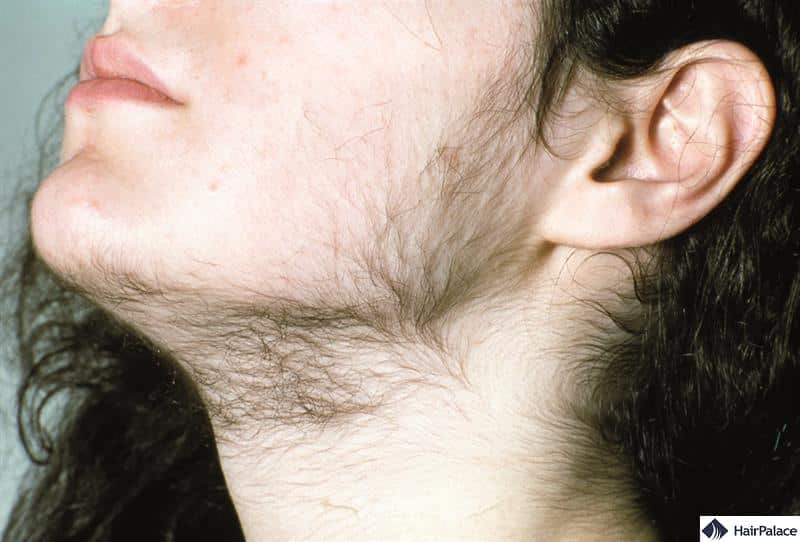
8. Syphilis
Syphilis is a bacterial infection that has several stages, it is primarily transmitted through sexual intercourse.
It is less common than other sexually transmitted infections, but it is currently on the rise in the UK with annual cases tripling in the last 10 years.
In 2010 the number of diagnosed cases was 2648 while the government reported 7982 syphilis cases in 2019.
A common symptom of early-stage syphilis is sore genitals, rectum or mouth. This is referred to as primary syphilis.
People usually notice hair loss as a part of secondary syphilis which occurs a few weeks later.
Syphilis and hair loss usually occur in the form of patchy hair loss in what’s known as a “moth-eaten” pattern. You may develop small bald patches or the condition can affect your entire scalp evenly in a large area.
No scarring occurs during this type of hair loss, so the hair can usually grow back with treatment.
When caught early, syphilis can be easily treated with penicillin injections.
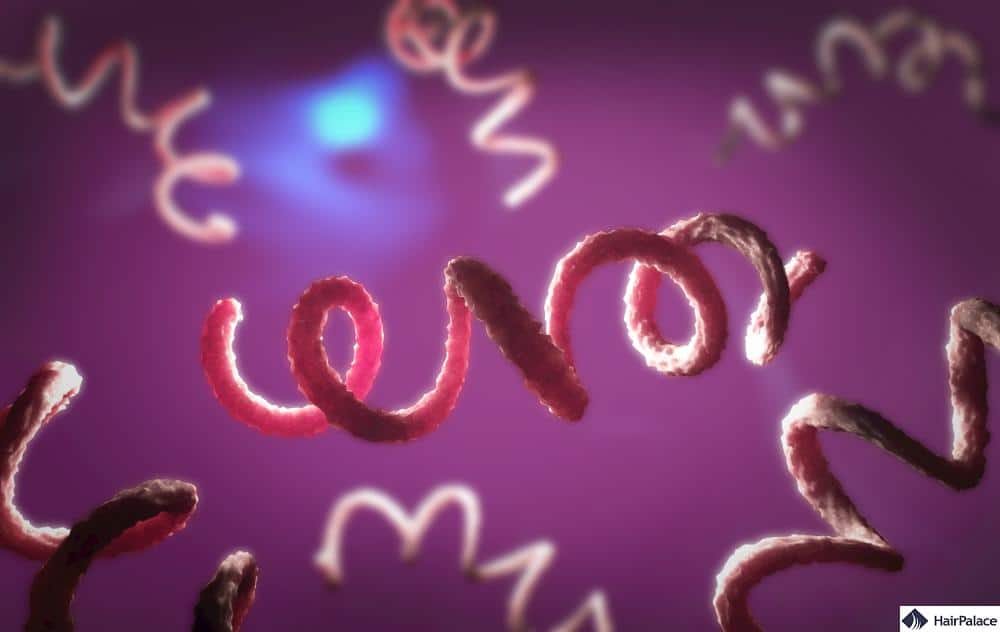
Treatment options
If the thinning can be traced to health issues that cause hair loss, it’s vital to start treatment for the underlying condition.
While not all of the illnesses listed above may cause permanent baldness, until you have the issue under control, addressing hair loss will not be effective.
Always consult your medical professional to find the best approach in your case.

How can you restore your thinning hair?
Once you know what medical conditions cause hair loss you’ll probably start wondering how to restore the damage caused by such illnesses.
Thankfully, as soon as your condition has improved, you have several procedures and products available on the market to encourage new hair growth.
The most popular treatments include:
- Rogaine foam
- Finasteride tablet
- Laser therapy
- PRP hair treatment
- Hair growth products
- Scalp massage
And in case hair loss is permanent, a hair transplant surgery could be an option.
Cutting-edge technologies and techniques enable our experts to restore hair growth in balding/thinning areas of the scalp.
To learn more about how our hair transplant surgery team can help, contact HairPalace today.
FAQ
Hair loss may be one indicator of a medical condition, such as a thyroid disorder (e.g. hyperthyroidism), syphilis, lupus, nutritional issues (such as an iron or protein deficiency), and a hormonal imbalance.
As a result of certain medical conditions, hair loss can be extensive. For example, alopecia areata (related to the immune system) leads to patchy hair loss, while ringworm and other scalp infections may contribute to shedding too. Trichotillomania, known as the hair-pulling disorder, is another potential cause.
If you suspect increased shedding could be due to medical conditions, hair loss may prompt you to visit your doctor. Patchy or bald areas on your scalp, steady thinning, or full-body hair loss may all indicate an underlying health issue.
It’s normal to lose some hair after having a fever or being ill, even with Covid. This is usually hair shedding rather than loss, and is known as telogen effluvium. It occurs when a higher number of hairs simultaneously pass into the telogen phase of the hair growth cycle than usual.
Hair loss in men can be caused by a variety of factors including genetic predisposition, hormonal changes, medical conditions, medications, stress, nutritional deficiencies, and harsh hair care practices.
Autoimmune diseases that are known to cause hair loss include alopecia areata, lupus, thyroid diseases, scleroderma and vitiligo.
Last medically reviewed on May 10th, 2024
- Vafaie J, Weinberg JM, et al. “Alopecia in association with sexually transmitted disease: A review.”Cutis. 2005;76:361-6.
- Paus R, Olsen EA, et al. “Hair growth disorders.” In: Wolff K, Goldsmith LA, et al. Fitzpatrick’s Dermatology in General Medicine (seventh edition). McGraw Hill Medical, New York, 2008:753-74.
- Guo EL, Katta R. “Diet and hair loss: Effects of nutrient deficiency and supplement use.” Dermatol Pract Concept. 2017; 7:1-10.
- Barlow J. Observations on the Mode of Curing the Tinea Capitis. Med Phys J. 1805 Dec;14(82):496.https://pubmed.ncbi.nlm.nih.gov/30491951
- Sperling LC. “Alopecias.” In: Bolognia JL, et al. Dermatology. (second edition). Mosby Elsevier, Spain, 2008: 987-1004.
- Chan L, Cook DK. Female pattern hair loss. Aust J Gen Pract. 2018 Jul;47(7):459-464.https://pubmed.ncbi.nlm.nih.gov/30114864





